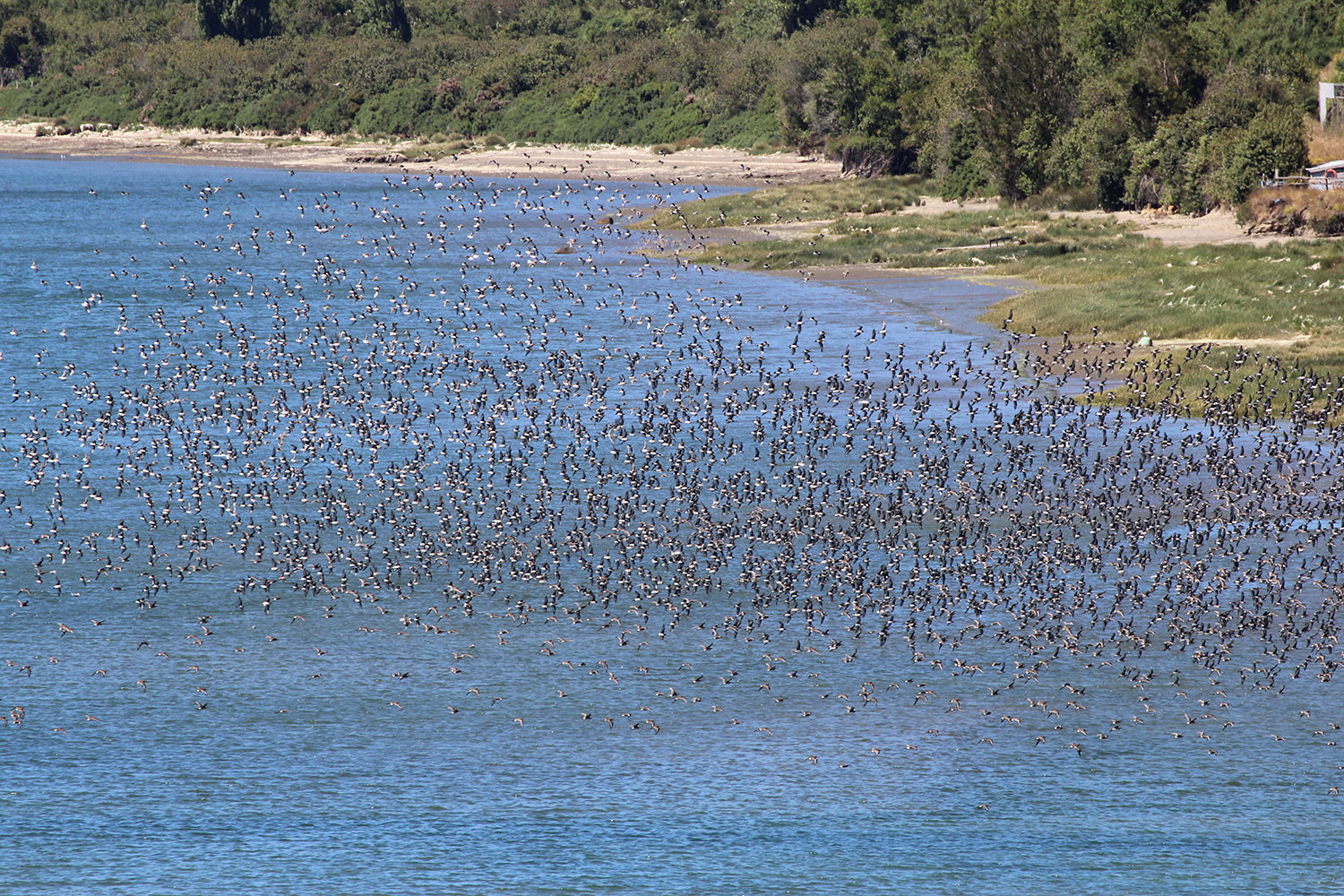Chiloé Island
About Chiloé
Chiloé, a key site for shorebirds on the Pacific coast
The Island of Chiloé, in southern Chile, is one of the most important sites for Hudsonian Godwit (Limosa haemastica) and Whimbrel (Numenius phaeopus) in the Western Hemisphere. The eastern wetlands of the island are home to 21,000 Hudsonian Godwits — 27% of the global population, and 99% of this species’ Pacific Coast population. The wetlands also support 61% of the Pacific Coast population of Whimbrel (Numenius phaeopus). Both species breed in North America and are considered of “high conservation concern” in the Americas, according to the US Shorebird Conservation Plan.
Chiloé has been recognized as a top conservation priority by a number of international organizations. For instance, BirdLife International has designated most of the eastern wetland ecosystems of the island as an Important Bird and Biodiversity Area (IBA).

Eastern Wetlands of Chiloé – a WHSRN site of Hemispheric Importance
In January 2011, 1,900 hectares of the Eastern Wetlands of Chiloé were declared as a WHSRN Site of Hemispheric Importance. This designation had the explicit support of landowners and managers, local municipalities and community organizations, and the national Ministry of Environment, and recognized the importance of the area for Hudsonian Godwit and Whimbrel.
Chiloé was selected by the David and Lucile Packard Foundation as a priority site for its portfolio of shorebird conservation projects. Thanks to the support of the Packard Foundation, the WHSRN Executive Office has been working with local, national, and international partners since 2010 to implement the Chiloé Migratory Shorebird Conservation Plan.
Chiloé Photos: Diego Luna Quevedo, Brad Winn, Monica Iglecia, and Maina Handmaker




